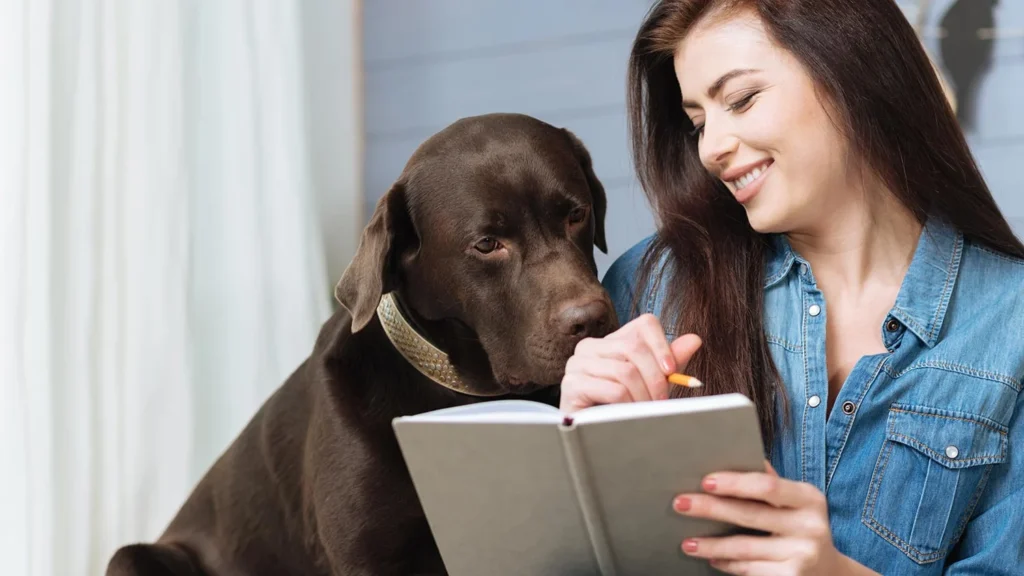Dogs don’t speak words, but they constantly communicate. From tail wags to yawns, these signals tell us about their emotional world—fear, calm, playfulness, stress, even illness. At BarkBliss, we believe decoding your pup’s body language is essential to a harmonious dog–human relationship. This guide will walk you through the key signals, how they overlap or mislead, and how you can respond accordingly.

📘 Table of Contents
- Why Body Language Matters
- The Canine Communication System
- Core Signals and What They Mean
- Ear Positions
- Eye Contact & Blink
- Mouth, Tongue & Panting
- Tail Postures
- Body Posture & Movement
- Vocalizations & Sounds
- Soft Signals vs. Alarm Signals
- Understanding Context & Calming Signals
- Reading the Red Flags: Stress & Conflict
- Using Body Language in Training & Bonding
- Protecting Your Dog: When Signs Indicate Illness
- Reading Puppy vs. Adult Dog Signals
- Putting It All Together: Real‑Life Scenarios
- Tips for Practicing Dog Body‑Language Literacy
- Final Woof & Reader Takeaway
- Resources & Recommended Reading
1. Why Body Language Matters
Dogs rely on posture, expressions, and movement to convey everything from comfort to fear. By understanding these cues, you’ll:
- Prevent misunderstandings or escalation.
- Improve training results.
- Detect illness or injury early.
- Strengthen your bond through compassionate response.
Image 1 (Header): A dog with a neutral posture, front-facing, calm eyes—a universal “hello” pose between human and canine.
2. The Canine Communication System
Explore how dogs use multiple channels—visual, vocal, olfactory—for nuance and layered communication.
- Channel integration: tail wag + relaxed body = play; stiff body + direct stare = potential threat.
- Evolutionary roots: pack signaling, social survival instincts.
Tip sidebar: Compare dog communication to human cues—tone of voice vs posture vs eye contact.
3. Core Signals and What They Mean
This is the meat—a breakdown of each body part and the emotions or intentions it signals, with overlap and interpretation notes.
A. Ear Positions
- Forward (alert or focused)
- Back (submission or fear)
- Asymmetrical (curiosity)

Image 2: Close-up collage of a dog’s ears in different positions.
B. Eye Contact & Blink
- Soft gaze (relaxed)
- Whale eye (fear/conflict)
- “Softening” with slow blink (calm)

C. Mouth, Tongue & Panting
- Closed mouth vs tense lips
- Lip-licking (stress)
- Yawning (stress vs tired)
- Panting intensity with context (heat vs stress)
D. Tail Postures
- Low & relaxed vs tucked (fear)
- Mid-height wag (curiosity)
- High stiff wag (arousal)
- Circular wag (happy/friendly)

E. Body Posture & Movement
- Play bow: invitation
- Stiff forward: potential aggression or fear
- Leaning into you: trust/affection
- Shrinking away: insecurity
F. Vocalizations & Sounds
- Barking types—alarm, play, frustration
- Whining (attention, discomfort)
- Growling (warning vs play)
- Whimpers vs sighs

4. Soft Signals vs. Alarm Signals
Soft signals: lip-licks, head turns, play bows—dogs use these to defuse tension.
Alarm signals: rigid stare, direct growl, hackles raised.

5. Understanding Context & Calming Signals
Context matters: yawning before a stressful veterinary exam signals fear. In play, yawns and wags are joyful.
Discuss ‘calming signals’ per Dr. Turid Rugaas: turning away, sniffing ground, slow blinking.
6. Reading the Red Flags: Stress & Conflict
Rising stress auto-escalates: lip-lick → whale eye → growl → snap.
Learn these escalation markers to defuse or de-escalate.
How to intervene: calm voice, break teaching moment, remove trigger.
7. Using Body Language in Training & Bonding
Train with positive timing: reward when dog shows you relaxed posture, not stiff compliance.
Demonstrate mirroring: if your dog is anxious, adopt a calm posture to reassure them.
Practice “watch me” for focus rather than grabbing leash.
8. Protecting Your Dog: When Signs Indicate Illness or Pain
Certain body language is an early red flag of sickness: guarded posture, refusing to lie down, avoiding eye contact.
Cover common issues: infection, arthritis, GI distress, ear pain.
9. Reading Puppy vs. Adult Dog Signals
Puppy learning: exaggerated bow, sloppy panting, quick head turns.
Mature dog: subtler signals—understanding takes time and patience.
10. Putting It All Together: Real-Life Scenarios
Include 3 composite scenarios:
- Park “off-leash play” interpreting wags posture.
- Greeting new visitor at the door.
- Vet exam room anxiety buildup.
Each scenario includes a breakdown of signals + suggestions for safe management.

11. Tips for Practicing Dog Body–Language Literacy
- Observe your dog daily for 5 minutes.
- Record responses to new situations.
- Use video for replay.
- Attend “Lifesaving Skills” classes.
- Keep a “calm signal cheat sheet” on the fridge.

12. Final Woof & Reader Takeaway
Encourage readers: “Understanding your dog’s signals isn’t about perfection—it’s about presence.”
Invite them to share their favorite body-language ‘aha’ moment in the comments.
Soft call to action: subscribe for monthly canine behavior insights from BarkBliss.
13. Resources & Recommended Reading
- On Talking Terms With Dogs by Turid Rugaas
- The Other End of the Leash by Patricia McConnell
- IAABC/members, vet behaviorists
- BarkBliss printable signal chart (opt-in PDF).
